Similar presentations:
The Landscape of US Policing
1.
The Landscape of USPolicing
This presentation explores the complex world of US policing. We will
examine the decentralized structure of law enforcement. We will
highlight federal, state, county, and municipal agencies. Join us to
understand the roles and responsibilities at each level.
by Дима Стець ко
2.
Federal L aw Enforcement AgenciesFB I
DEA
ATF
S ecret S ervice
The Federal Bureau of
The Drug Enforcement
The Bureau of Alcohol,
The Secret Service protects
Investigation handles
Administration combats
Tobacco, Firearms and
leaders and financial
counterintelligence and
drug trafficking and
Explosives investigates
systems. They coordinate
cybercrime.
distribution.
federal offenses.
with other agencies.
3.
S tate and L ocal P oliceS tate P olice
County S heriffs
State police have statewide
County sheriffs handle law
jurisdiction, focusing on
enforcement, jail
highway patrol and
management, and court
investigations.
security.
Municipal P olice
Local police departments focus on community-level policing
strategies.
4.
Training and S tandardsB as ic Training
Police officers complete basic training programs. The
average is ~600 hours.
Curriculum
Academies cover law, firearms, tactics, and community
relations.
S pecialized Training
Programs include SWAT, crisis intervention, and
cybercrime.
5.
Community Policing and Public Relations2
Building Trust
Problem-Solving
1
Community Partnerships
3
Community policing aims to improve relations. This includes foot patrols and community meetings. Social media is used for
public information campaigns.
6.
Us e of Force P olicies1
L egal Framework
2
Continuum of Force
The Fourth Amendment
This includes presence,
governs the use of force.
commands, control, lesslethal weapons, and deadly
force.
3
De-es calation
Officers use de-escalation techniques to avoid force.
7.
Challenges andControversies
1
Crime Rates
Departments face challenges due to crime rates and
budget limits.
2
Misconduct
Controversies surround police misconduct and racial
profiling.
3
Accountability
Body-worn cameras increase accountability.
8.
The Future of P olicingTec hnology
1
Community
2
3
Ethics
The future includes technology and community engagement. Evidence-based practices will be important. Leadership and
ethics will shape policing.
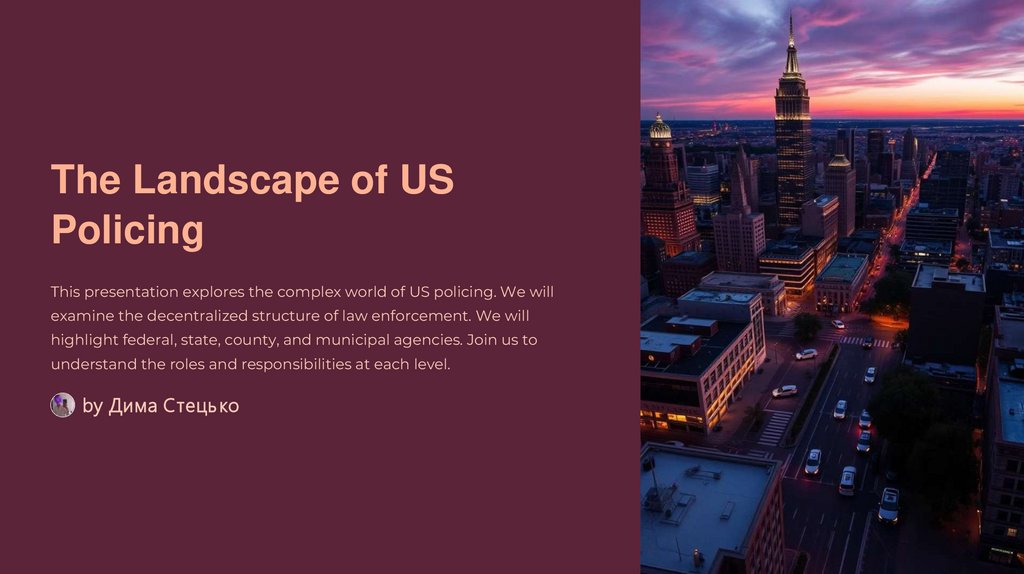

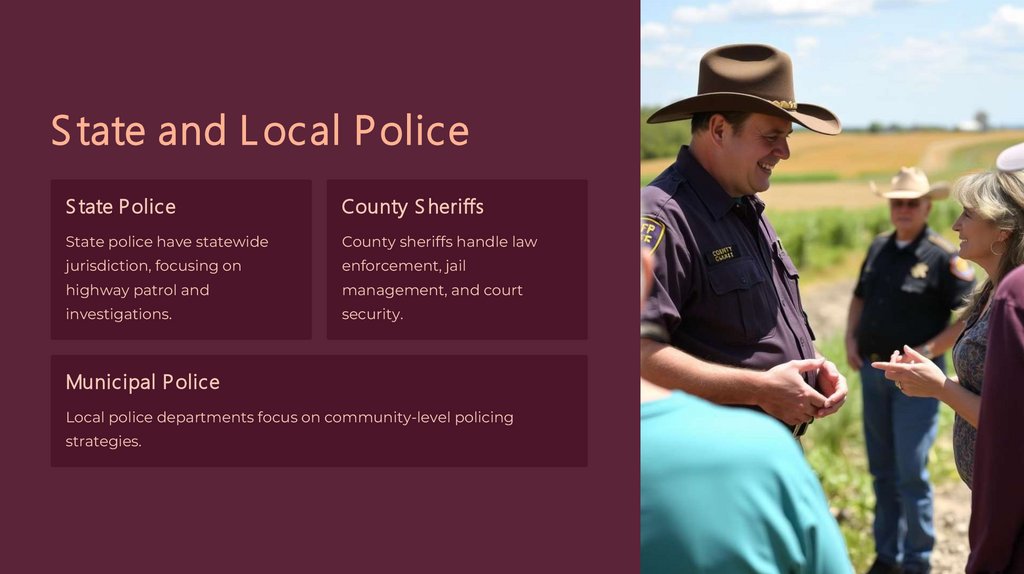

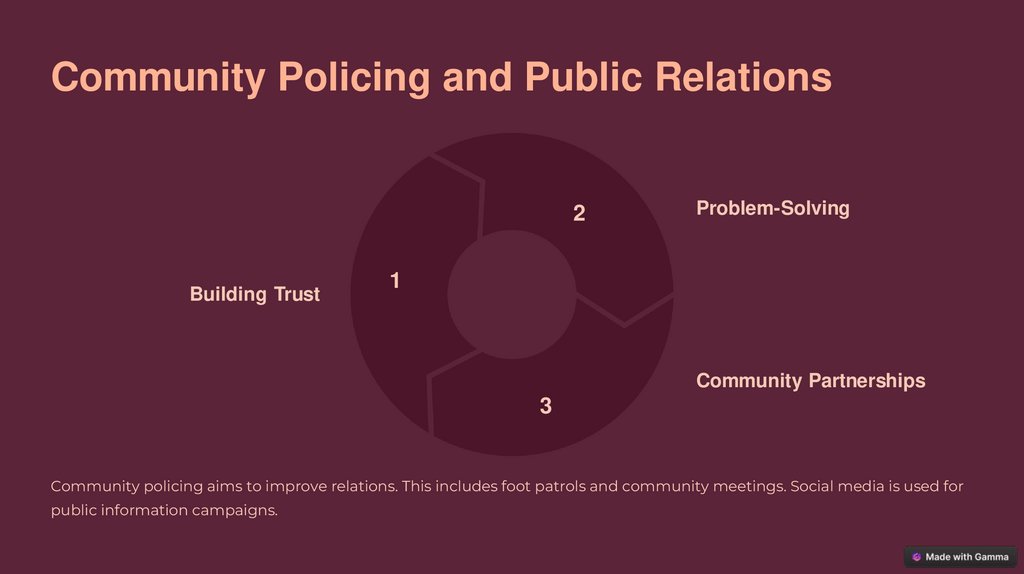
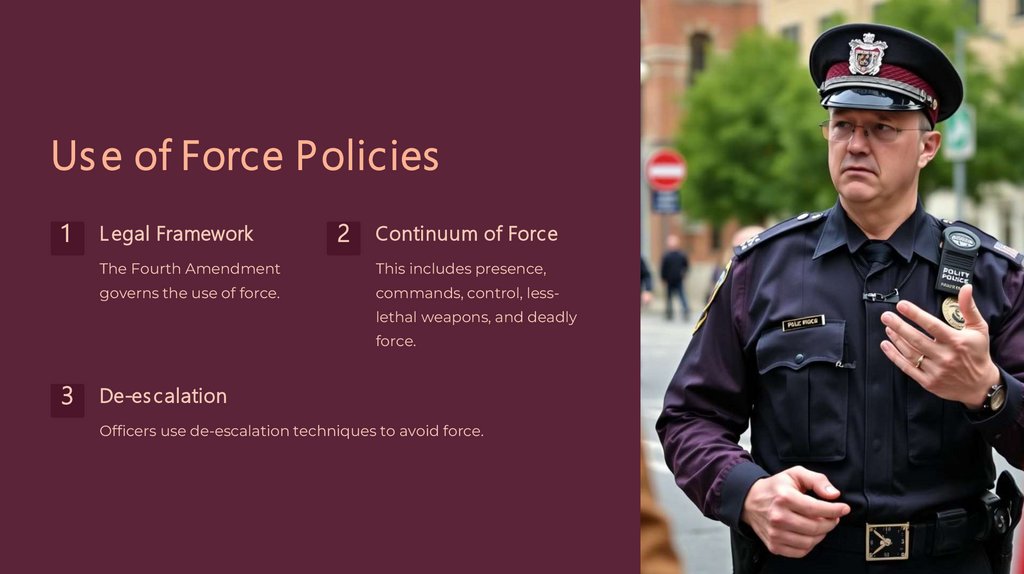
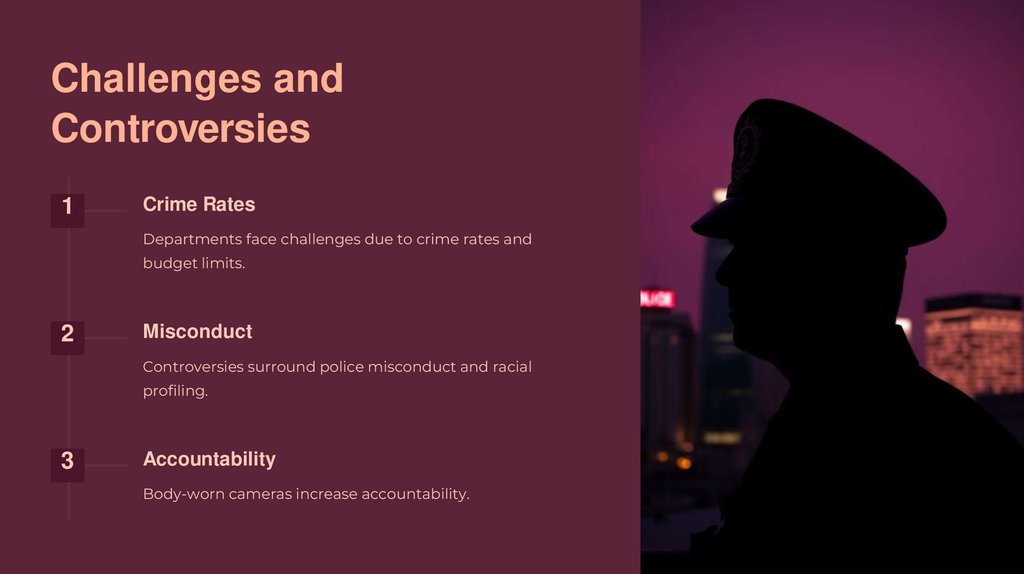
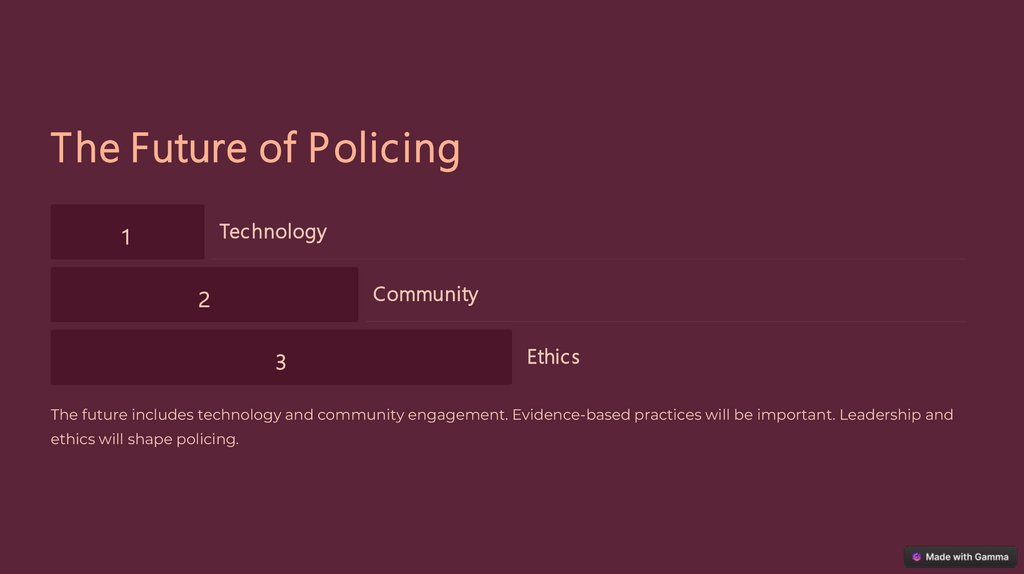
 law
law








